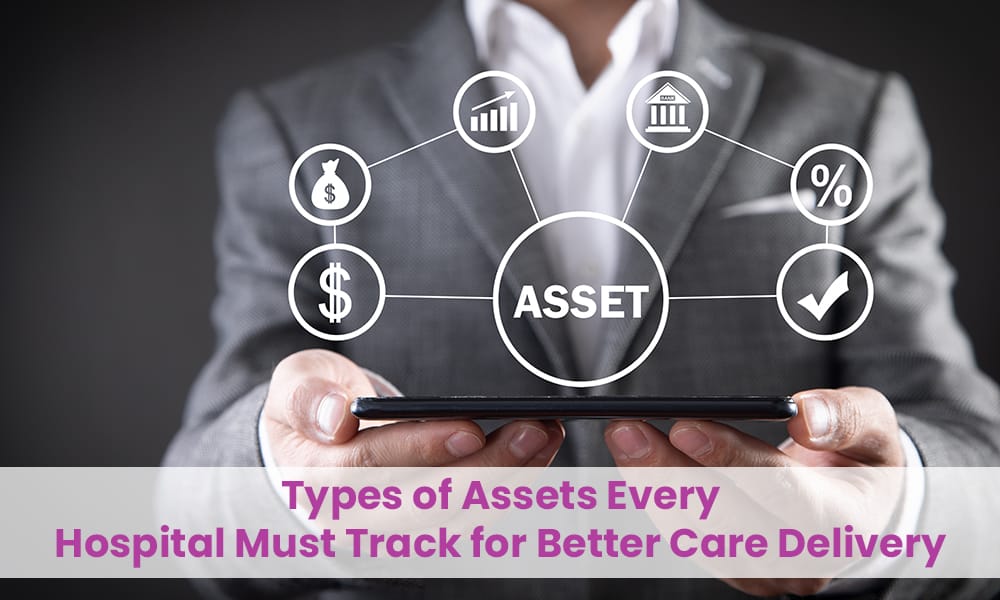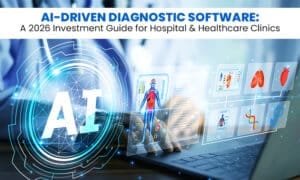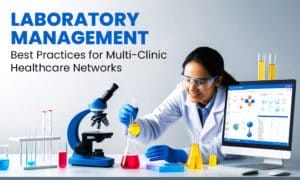
Hospitals thrive on precision, efficiency, and reliability. Each medical device, each bed, and each supply chain item determines whether a patient receives timely care or experiences a dangerous delay. In a healthcare environment where margins shrink and patient demands increase, hospital asset management has emerged as a critical pillar for operational success.
When equipment goes missing or lies underutilised, patients wait longer, staff lose valuable time, and administrators absorb unnecessary costs. In fact, a report by GE Healthcare shows that up to 25% of hospital equipment remains idle or misplaced at any given time, creating inefficiencies that ripple across the entire hospital ecosystem.
With the rise of connected healthcare systems, healthcare asset tracking now empowers leaders to optimise resources, ensure compliance, and streamline workflows. From patient bedsides to boardroom strategy sessions, executives increasingly rely on hospital asset software to unlock real-time visibility, enhance care quality, and improve return on investment.
The Global Shift: Why Smart Asset Management Matters Now
Healthcare systems across the globe stand at a critical crossroads. Rising patient populations, increasing disease complexity, and an ever-growing demand for advanced medical treatments stretch resources beyond their limits. At the same time, budgets shrink, staff shortages deepen, and regulatory frameworks tighten. Leaders now operate in a high-stakes environment where every asset—whether clinical or non-clinical—must deliver measurable value.
The Cost of Inefficiency
Traditional management methods such as spreadsheets, manual logs, or paper-based inventory registers once sufficed for smaller, less complex facilities. In today’s large hospitals, these outdated practices create bottlenecks. Staff waste valuable time searching for infusion pumps, wheelchairs, or diagnostic machines. Biomedical teams cannot track maintenance cycles effectively. Administrators often approve unnecessary purchases simply because they lack visibility into existing inventory.
The World Health Organization (WHO) highlights that inefficient resource allocation wastes between 20% and 40% of healthcare spending globally. That figure translates to billions of dollars annually—funds that could otherwise support life-saving treatments or workforce expansion. For hospital boards, this inefficiency not only erodes financial performance but also threatens reputation and patient trust.
The Shift Toward Digital Asset Management
Recognising these challenges, healthcare leaders worldwide are embracing smart hospital asset management. By integrating IoT sensors, barcodes, RFID, and real-time location systems (RTLS), hospitals gain 360-degree visibility of their assets. Every piece of equipment—whether a ventilator, surgical tool, or even a patient bed—becomes digitally trackable, monitorable, and accountable.
Compliance and Global Standards
Another driver behind this global shift is the tightening of healthcare regulations. Accrediting bodies such as NABH, ISO, and HIPAA demand transparent and auditable asset records. Manual logs rarely withstand rigorous inspection. In contrast, digital healthcare asset tracking systems generate audit-ready reports instantly, ensuring compliance without draining staff resources.
Clinical Impact: How Hospital Asset Tracking Improves Patient Outcomes
Patient care relies on timely access to functioning equipment. A ventilator that cannot be found in an emergency directly impacts survival rates. A diagnostic machine out of service delays detection and treatment. Medical equipment tracking eliminates these bottlenecks by ensuring assets remain available, functional, and properly maintained.
Faster Access to Devices: Nurses locate infusion pumps or monitors in seconds instead of wasting critical minutes.
Reduced Downtime: Automated maintenance schedules ensure equipment works safely and reliably.
Improved Safety: Hospitals track calibration and sterilisation records digitally, guaranteeing compliance with safety standards.
A case in point: The Cleveland Clinic implemented healthcare asset tracking to monitor infusion pumps across multiple facilities. The result? 30% faster turnaround times during patient admissions and a 15% drop in device-related incidents. These improvements directly translated to safer, faster, and more consistent patient care.
Top 10 Types of Hospital Assets to Track for Better Care Delivery
Every hospital manages thousands of assets, but not all carry equal weight. These are the top hospital assets every facility manager should monitor to ensure operational efficiency and better patient care.
• Clinical Assets
- Beds and Stretchers – Critical for admissions, transfers, and ICU care. Tracking ensures optimal allocation.
- Ventilators and Infusion Pumps – Lifesaving devices that must remain available and calibrated.
- Diagnostic Equipment (MRI, CT, Ultrasound, X-ray) – High-cost assets that need maximum utilisation to justify investment.
- Surgical Instruments – Require strict sterilisation and monitoring to prevent infections.
- Medication Carts & Pharmacy Inventory – Vital for accurate drug delivery and stock management.
• Non-Clinical Assets
- IT Infrastructure (Servers, Workstations, Printers) – Supports digital workflows, EHRs, and communication systems.
- HVAC, Energy & Utility Systems – Directly affect patient safety and comfort in operating rooms and wards.
- Wheelchairs & Mobility Aids – Enhance accessibility and reduce delays in patient transfers.
- Staff ID Badges & Time-Tracking Devices – Optimise workforce allocation and improve accountability.
- Ambulances & Transport Vehicles – Extend care beyond hospital boundaries while demanding strict maintenance schedules.
- Tracking these assets ensures both patient-facing and operational functions remain efficient and compliant.

Categorising Hospital Assets: Clinical vs. Non-Clinical
Effective hospital asset management requires clear categorisation:
Clinical assets directly impact patient treatment. Ventilators, monitors, surgical kits, and diagnostic machines fall in this category. Their downtime risks lives.
Non-clinical assets indirectly affect care delivery. IT systems, building infrastructure, and transport fleets ensure hospitals operate smoothly.
For administrators, using hospital asset management-based software to separate these categories simplifies reporting, streamlines compliance checks, and reduces maintenance backlogs.
The Compliance Angle: Why Asset Tracking is Essential for NABH, ISO & HIPAA
For hospitals, compliance is not just about ticking regulatory boxes—it safeguards patient safety, builds institutional credibility, and ensures long-term sustainability. Accrediting bodies such as NABH (National Accreditation Board for Hospitals & Healthcare Providers), ISO (International Organization for Standardisation), and HIPAA (Health Insurance Portability and Accountability Act) enforce strict guidelines. These frameworks mandate documented proof of asset utilisation, calibration, and preventive maintenance to guarantee that all clinical and non-clinical assets operate safely and effectively.
Without compliance, hospitals risk penalties, loss of accreditation, and reputational damage. Patients increasingly choose accredited hospitals because compliance signifies quality, transparency, and accountability.
The Traditional Compliance Challenge
In many hospitals, compliance audits remain manual and time-consuming. Biomedical engineers and administrators maintain spreadsheets, paper logs, and fragmented maintenance records. During audits, teams spend weeks compiling reports, tracking calibration certificates, and validating maintenance schedules.
This manual process creates three major risks:
Human Error: Misplaced records or incomplete entries can result in non-compliance.
Delays: Weeks of preparation delay other critical administrative tasks.
Cost Impact: Extra labour and overtime inflate operational costs.
For large hospitals managing 10,000+ assets, manual compliance becomes nearly impossible without technology.
How Healthcare Asset Tracking Solves the Compliance Bottleneck
Smart hospital asset management-based software transforms compliance from a reactive scramble into a proactive, automated process. Here’s how:
Real-Time Asset Monitoring
- Every asset, from ventilators to diagnostic equipment, is tagged and tracked.
- Hospitals know usage history, current location, and maintenance status instantly.
Automated Maintenance & Calibration Logs
- Software schedules preventive maintenance based on usage cycles.
- Calibration certificates are uploaded directly into the system, ensuring readiness for audits.
Audit-Ready Reporting
- Administrators generate NABH, ISO, or HIPAA-compliant reports with a single click.
- Auditors receive detailed records of every asset’s lifecycle, reducing disputes.
Alert & Notification Systems
- Automated alerts notify staff before compliance deadlines.
- This proactive approach eliminates last-minute lapses.
Compliance Across NABH, ISO & HIPAA
Each accrediting body has unique requirements, and healthcare asset tracking addresses all of them:
• NABH: Focuses on patient safety and quality standards. Hospitals must demonstrate equipment maintenance, sterilisation records, and calibration logs. Asset management software centralises this evidence.
• ISO 9001 & ISO 13485: Emphasise quality management systems. Real-time asset tracking ensures documentation consistency, equipment reliability, and process standardisation.
• HIPAA: Protects patient health data. Asset tracking secures IT infrastructure, servers, and data-storage devices, ensuring hospitals prevent breaches and unauthorised access.
By addressing these standards simultaneously, hospital asset management software provides a unified compliance solution.
A Deloitte healthcare report revealed that hospitals leveraging asset management technology reduced audit preparation time by 40%. Instead of diverting resources into manual paperwork, administrators focused on patient-centred initiatives such as improving bed utilisation and reducing wait times.
This shift demonstrates a critical point: compliance, once viewed as an operational burden, now acts as a strategic enabler. Hospitals not only meet regulatory requirements but also unlock efficiency, reduce costs, and build stronger reputations.
Strategic Benefits Beyond Compliance
Operational Efficiency: Automated compliance reduces staff workload, freeing them for higher-value tasks.
Cost Reduction: By avoiding penalties and fines, hospitals reduce costs with hospital asset management.
Accreditation Advantage: Accreditation boosts trust among patients, insurers, and government bodies.
Continuous Improvement: Data-driven insights allow leaders to improve beyond minimum compliance standards.
Manual Compliance vs. Smart Asset Tracking

Manual compliance drains time, increases human error, and diverts staff from patient care. Hospitals spend weeks gathering fragmented records, risking audit failures. In contrast, hospital asset management software automates documentation, generates audit-ready reports instantly, minimises errors, and ensures proactive compliance. This reduces regulatory risk and improves efficiency significantly.

Real-Time Location Systems (RTLS): A Game-Changer in Hospital Asset Tracking
RTLS technology transforms how hospitals locate and utilise equipment. Staff attach small tags to devices, which transmit real-time signals to tracking software.
Benefits include:
Instant Visibility: Clinicians locate infusion pumps, wheelchairs, or stretchers within seconds.
Optimised Utilisation: Administrators identify underused equipment and reallocate efficiently.
Predictive Maintenance: RTLS data highlights usage cycles, prompting preventive service before failures occur.
Case study: The University of Maryland Medical Center implemented RTLS to track mobile equipment. Within six months, the hospital reduced unnecessary equipment purchases by 23% and improved staff satisfaction scores significantly.
RTLS delivers measurable returns, making it an essential part of modern medical equipment tracking.

Preventing Loss, Theft, and Downtime with Smart Asset Tracking
Hospitals lose millions annually due to misplaced or stolen equipment. Unmonitored downtime further drains resources. Smart healthcare asset tracking eliminates these risks.
RFID tags trigger alerts during unauthorised movement.
Automated logging prevents staff from hoarding devices.
Service alerts reduce breakdowns and keep assets functional.
For example, Singapore General Hospital introduced RFID-based hospital asset management software across its facilities. Equipment theft dropped by 35%, and annual maintenance costs fell by 18%. By focusing on security and uptime, leaders also reduce costs with hospital asset management and strengthen financial stability.
Beyond Cost Savings: How Smart Asset Management Transforms Decision-Making
While savings matter, strategic insights transform leadership decisions. With data from hospital asset management software, executives gain:
Bed Occupancy Dashboards: Optimise patient admissions and discharges.
Equipment Utilisation Reports: Prevent overspending on redundant devices.
Staff Productivity Metrics: Align workforce deployment with real needs.
The Future of Healthcare Asset Management
The future of asset management lies in predictive analytics and AI-driven decision-making. Hospitals will no longer react to breakdowns but will anticipate them. IoT-connected devices will communicate their maintenance needs. Digital twins will simulate hospital environments to optimise resource allocation in real time.
Globally, the adoption of smart healthcare asset tracking continues to rise. Frost & Sullivan projects the global healthcare asset management market will reach $50 billion by 2030, driven by demand for efficiency and patient safety.
Hospitals that adopt hospital asset management software today position themselves as leaders in tomorrow’s digital healthcare ecosystem.
Why No Hospital Can Afford to Ignore Asset Management
Hospitals cannot afford inefficiency. Lost equipment, idle machines, and compliance risks damage both finances and reputations. Smart hospital asset management provides leaders with the tools to streamline operations, enhance compliance, and deliver superior care.
By embracing healthcare asset tracking, administrators improve patient outcomes, optimise staff productivity, and safeguard compliance. Medical equipment tracking prevents downtime and loss, while hospital asset management solutions transform operational data into actionable strategies.
The journey from bedside to boardroom is clear. Hospitals that prioritise asset management today secure sustainable growth, financial resilience, and a reputation for delivering exceptional care tomorrow.





